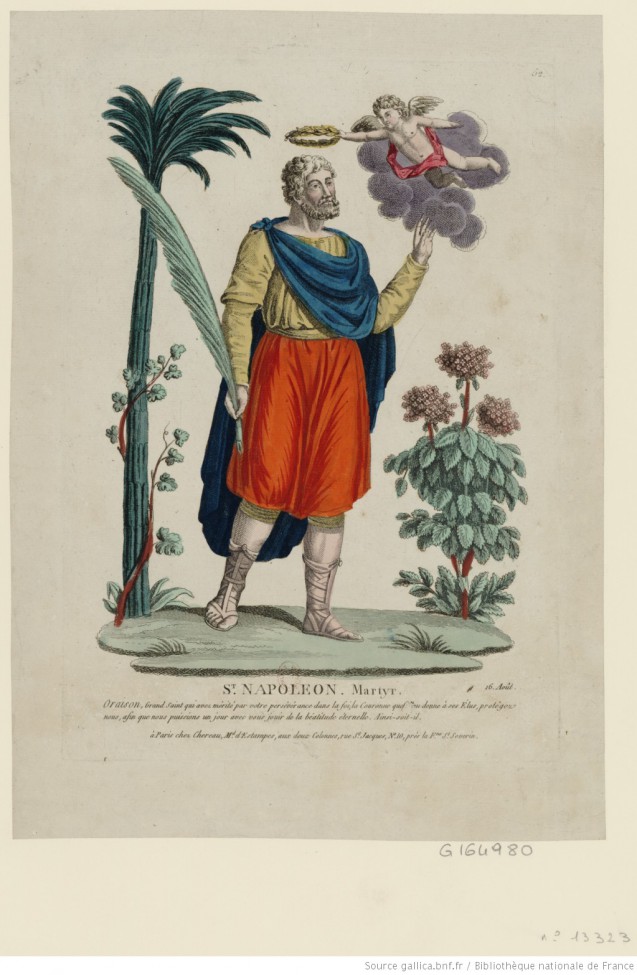In addition to his genius, his ability to take advantage of circumstances, and his mastery as a statesman and military leader, Napoleon was fortunate enough to have been endowed with a distinctive first name. He himself acknowledged that it had proved invaluable to him as a means to be noticed.
Napoleon’s parents named him after a great uncle who died in 1767. Whilst not a very common first name, it was known in Corsica and spelt in different ways – “Napoleone”, “Napulione” or even “Lapulion”. Naturally, its etymology has been studied extensively. The hypothesis favoured by specialists is that “Napoleon” came from the Italian “Nevoleone”, itself from “Neapolis” (Naples) and “leone” (lion). This was not however the version of the story accepted during the Empire, when it became necessary to “find” a Saint Napoleon. When solicited by the Emperor’s uncle, Cardinal Fesch, the Vatican finally came up with (or invented) a soldier named “Neopolus”, who supposedly had been martyred under Diocletian but who probably never existed, and whose feast day was to be established, for obvious reasons, on 15 August. This day was fixed as an official holiday throughout the Empire via a decree issued on 19 June 1806, the rubrics of which specified that henceforth the 15 August would be a combined celebration of St Napoleon’s Day, the Assumption of the Blessed Virgin Mary, and also the commemoration of the “period” when the Concordat with the Pope was signed (actually dated 15 July 1801).
After the fall of the Second Empire, “Neopolus-Napoleon” disappeared from the list of saints whose days are celebrated by the Roman Catholic Church. However, the name still retains a place in Jacques Merceron’s Dictionnaire des saints imaginaires et facétieux [Dictionary of imaginary and whimsical saints] 2002.
Image source Gallica.


